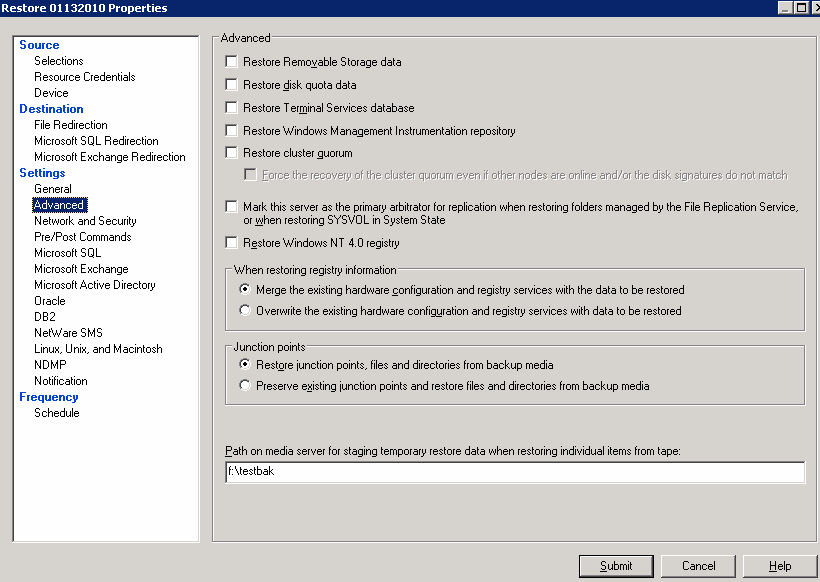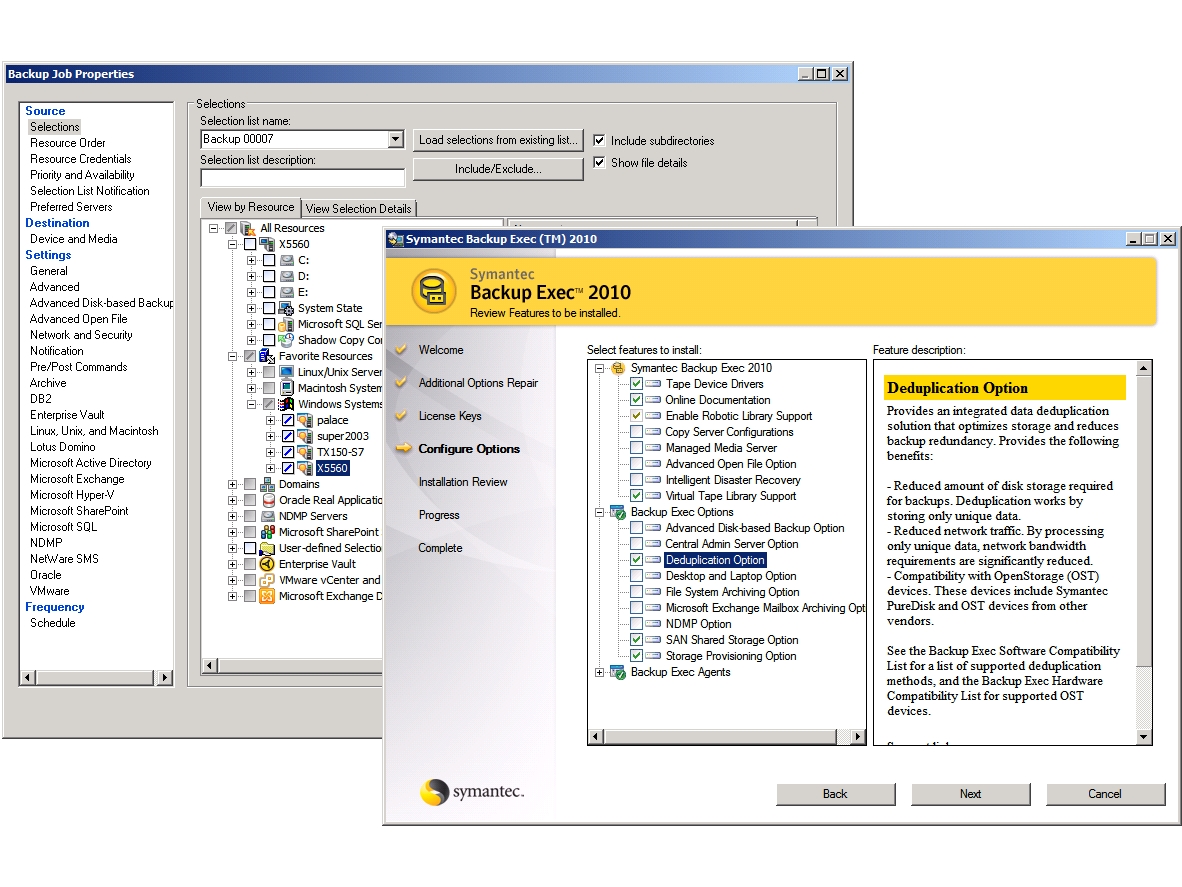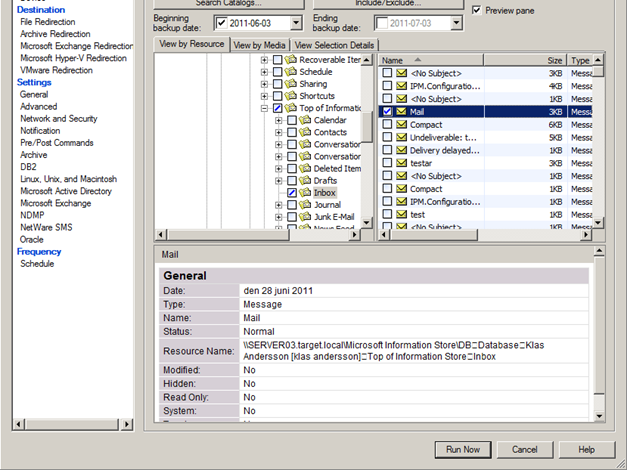
Select Recover to another location and enter the path to a folder that is different to the location of the live mailbox database or log files.

Select Exchange as the application to recover Choose the Recovery Type of ApplicationsĬhoose Exchange as the application to recover, and check the box to not perform a roll forward of the database. Choose the Backup Date and Time to Restore fromįor Exchange Server 2010 mailbox database restores choose Applications as the Recovery Type. Choose the Backup Location to Restore fromĬhoose the backup date and time to restore from, and click Next to continue.
#EXCHANGE BACKUP EXEC 2010 WINDOWS#
Launch the Windows Server Backup Recovery WizardĬhoose the location of the backup you wish to restore from, and click Next to continue. Start by launching Windows Server Backup, and then in the Actions pane click on Recover to start the Recovery Wizard. The first step is to perform a restore of the mailbox server backup, redirecting the restore to an alternate location on the server. Restoring an Exchange Server 2010 Mailbox Database to an Alternate Location Because the mailbox database is still in production we’ll need to use a Recovery Database to restore the backup. In this scenario the user has deleted the mail items and they have since been purged from the recoverable deleted items folder as well. Exchange 2010 Mailbox Database Backup and Restore with Windows Server Backup.You can refer to this tutorial for the exact steps to perform Exchange Server 2010 mailbox server backups with Windows Server Backup. The mailbox server was backed up using Windows Server Backup. Exchange 2010 Mailbox Userīacking Up the Exchange Server 2010 Mailbox Database The mailbox user “Alex Heyne” is being used for this tutorial, and he has the following items in his inbox. Restoring Mailbox Items from a Recovery Database.Creating an Exchange Server 2010 Recovery Database.Bringing the Restored Database to a Clean Shutdown State with ESEUtil.Restoring an Exchange Server 2010 Mailbox Database to an Alternate Location.Backing Up the Exchange Server 2010 Mailbox Database.

Hope this helps many Backup Exec users.In this tutorial I’ll demonstrate the step by step process for recovering individual mailbox items for an Exchange Server 2010 mailbox using Windows Server Backup. Restore to Database or Recovery Database:ģ) Go to Microsoft Exchange and select Default optionsĥ) Once the restore is successfully completed data from a RDB can be merged to an existing mailbox or exported to a folder. Redirect to Server or Database Availablity Group: Enter the following options as shown in Figure.2 Select the This database can be overwritten by a restore option on the database property page in Exchange Management Console utility.Ģ) Select the Database to be restored from the Backup Exec Restore job propertiesģ) Go to Microsoft Exchange Redirection and select Redirect Exchange Sets. If you do mount the recovery database before the restore, you must dismount it. New-MailboxDatabase -Recovery -Name RDB -Server “servername” -EdbFilePath "path" -LogFolderPath "path”įor Eg.: new -mailboxdatabase -Recovery -Name BD100 -Server MBX1 -EdbFilePath "D:\BD100\Database\BD100.edb" -LogFolderPath "D:\BD100\Logs"ĭo not mount the recovery database before the restore. Refer to Figure.1 and use the following command in shell to create the RDB: You cannot create a recovery database using the Exchange Management Console. So now lets see the step by step process of creating the Recovery Database (RDB) and then restoring the data to it.ġ) Create a Recovery Database (RDB) in Exchange 2010 using the Exchange Management Shell. There can be multiple recovery databases, but only one can be mounted at a time.

Each Exchange 2010 server can have no more than one mounted recovery database. The Recovery Database (RDB) is not tied to any original server or database. Instead, if your application needs to restore, recover, and mount an Exchange database to a different location or server, it will use a RECOVERY DATABASE (RDB).

One of the major changes in Microsoft Exchange 2010 is the removal of the concept of Storage Group which were previously present in Exchange 2003 and Exchange 2007.īecause storage groups were removed from Exchange Server 2010, the Recovery Storage Group (RSG) no longer exists. To implement Exchange 2010-compatible backup and restore applications, may need to adjust application to accommodate the changes described in this topic. Microsoft Exchange Server 2010 introduces new technologies and features in many areas, and removes other important storage features. In this article we will see the procedure to restore Exchange 2010 database to the Recovery Database using Backup Exec 2010.


 0 kommentar(er)
0 kommentar(er)
